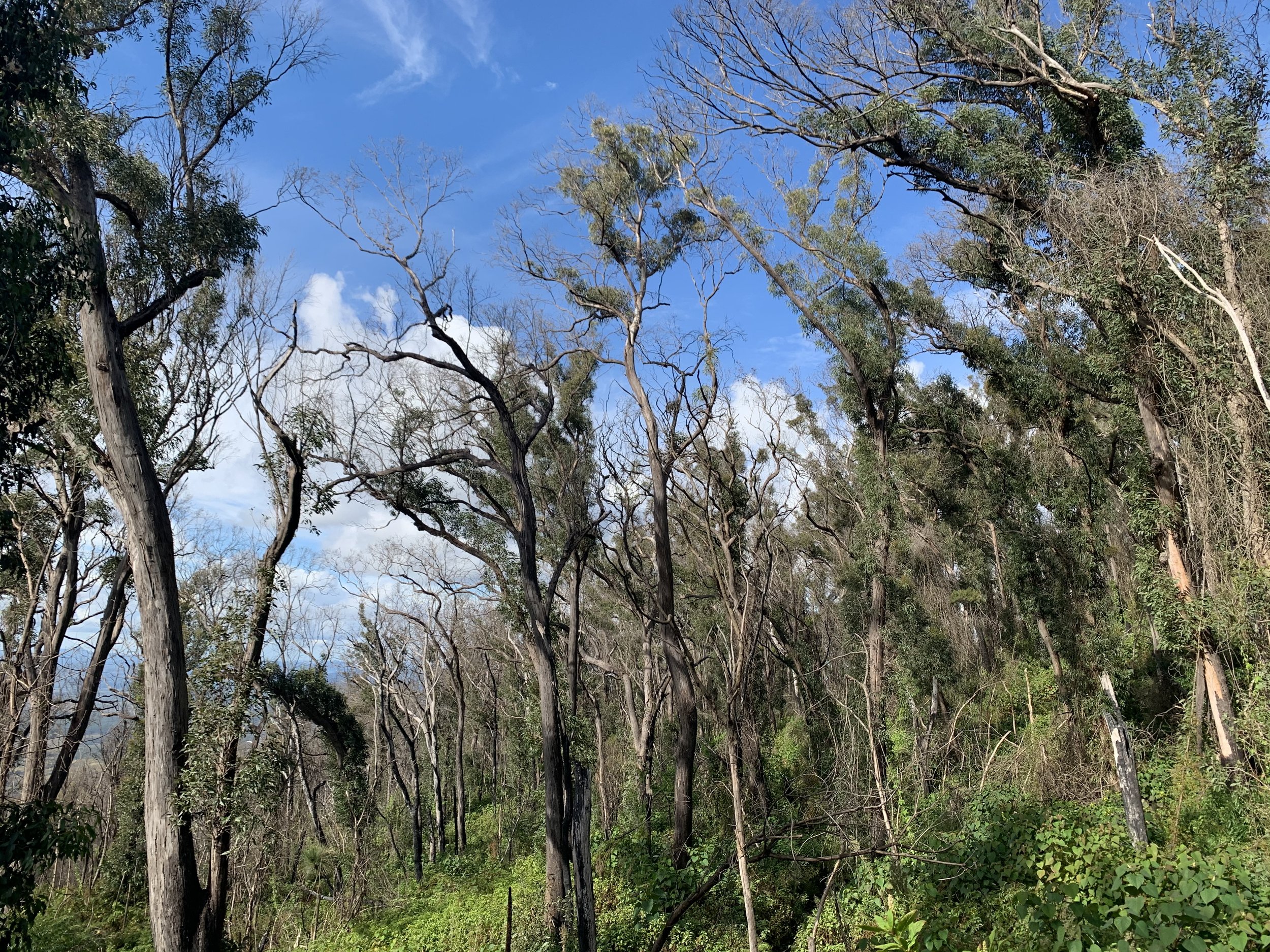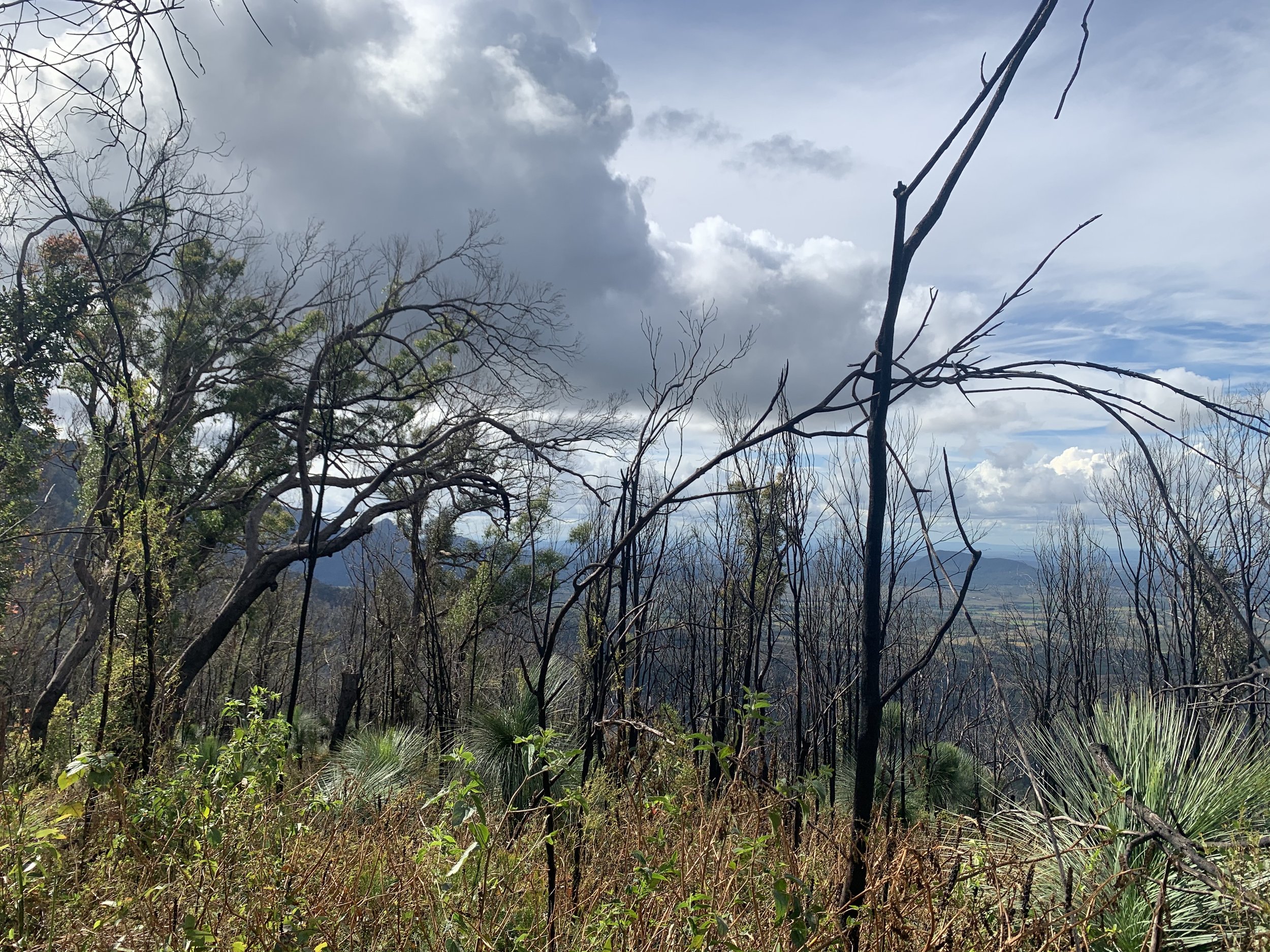The south-eastern subspecies of Glossy Black-Cockatoo is now a listed threatened subspecies (Vulnerable) under the Environment Protection and Biodiversity Conservation Act 1999 (EPBC Act).
The subspecies was recommended for listing following the 2019/20 Black Summer bushfires. The Threatened Species Scientific Committee undertook a formal assessment which was subsequently released for public consultation. In 2021, I along with some of my colleagues, provided a detailed response to the Australian Government to ensure that all available data and knowledge was considered in the decision. We were supportive of the proposal to list the species as Vulnerable. The recent change in Government delayed the announcement, but this was a decision we were expecting.
How did we get here and where to now?
It’s a story not dissimilar to so many Australian species. Widespread and rapid habitat loss since European invasion has led to a dramatic decline in habitat. The species’ distribution contracted and so too did its population size. Unlike some other species, Glossy Black-Cockatoos are not very adaptable in their habitat preferences. To survive, they need nutritious she-oak trees to feed on (noting they are selective down to the individual tree!), fresh water to drink, and old hollow-bearing trees to nest in. They need enough habitat to support their low-density population. The configuration of habitat needs to support their social structures, because cockatoos learn from each other. They are not born knowing how to be a cockatoo, how to survive in an increasingly challenging world.
One year post Black Summer, during Glossy Black-Cockatoo surveys.
Example of habitat that experienced very high severity fire.
Severe drought over recent years was a major warning sign that the situation for Glossy Black-Cockatoos was not safe nor stable. Surveys of feed trees in south-east Queensland showed dramatic effects of drought on the quality of feeding habitat. This aligned with previous research in New South Wales that showed decreased rainfall reduces she-oak cone production (Cameron 2006). Combined with its ability to increase the risk of wildfire, drought was, and continues to be, a very serious threat to the future of Glossy Black-Cockatoos. We were all very concerned in the years leading up to 2019.
And then, almost as expected, in the summer of 2019/20 the situation deteriorated.
The Black Summer bushfires were a major blow to the subspecies’ conservation status. We estimate that 34% of the subspecies’ area of occupancy was burnt (Cameron et al. 2021). About 10% of the subspecies’ range experienced high to very high fire severity, which we know causes tree death (and possibly death of the birds too) and, therefore, a reduction in food. This may even lead to a shift in distribution, as has happened with the Kangaroo Island subspecies in South Australia. Severe fire can also destroy critical nesting habitat, which is not easily replaceable.
A further 15% of the subspecies’ habitat range experienced lower intensity fire, which may be detrimental, neutral or beneficial, since she-oaks are partly reliant on fire for regeneration. We know from Kangaroo Island that old, long unburnt habitat offers poor food quality and is rarely used by Glossy Black-Cockatoos (Delzoppo et al. 2021). Getting the right mix of fire into the landscape is very important.
How bad is the situation now? It’s hard to say. We know a few things:
Some habitat that burnt has not yet recovered, and the birds have not returned there;
The birds have shifted their distribution in some places, potentially relying on poorer quality habitat, with unknown consequences;
The birds have persisted in some areas that experienced lower intensity fire, and there is evidence of she-oak regeneration in some places.
We estimate that the subspecies comprises a population of 7,500 mature individuals (range 6000 – 10,500) and is declining (Cameron et al. 2021). We assume that the 2019/20 fire led to 30% of the subspecies’ habitat becoming unsuitable.
Male Glossy Black-Cockatoo feeding on a forest she-oak.
Male Glossy Black-Cockatoo in feeding habitat that experienced low severity fire.
We can’t say what all these things mean for the population right now; we’re working on it. But the thing is this: with centuries of habitat loss behind us, any further reduction – especially in critical areas that support many birds – is likely to be detrimental.
Our current research is examining the occupancy and habitat use of Glossy Black-Cockatoos across south-east Queensland to better understand how the birds respond to bushfire. With that knowledge, we can better predict how the birds will cope with increasing threats, particularly those associated with a drying, warming climate. We can better plan conservation actions for the long term. We’re thinking 50, 100, 500 years ahead.
However, with threatened species, it is often necessary to act with incomplete knowledge. That is the case with the South-eastern Glossy Black-Cockatoo. To that end, there are several actions that my colleagues and I recommend. I won’t provide all the details here, but rather refer people to our recently published Glossy Black-Cockatoo Conservation Guidelines. For a further detailed account of the subspecies, and its conservations status, please refer to the recent Action Plan for Australian Birds 2020.
I’m sad that we live in a world where the South-eastern Glossy Black-Cockatoo is a threatened subspecies. However, formal listing in legislation does (or, at least, should) benefit the subspecies’ conservation. Despite our generally terrible track record of saving species, the listing is an important step in the right direction. A recovery team will be formed and a formal recovery plan or conservation advice will be endorsed. The Government then needs to ensure that actions won’t conflict with the recovery plan to worsen the subspecies’ conservation. This will take a while, but it’s a step in the right direction.
It's often hard to stay positive with these things – with knowing the situation for Glossy Black-Cockatoos and so many other species is worsening – but with this listing the situation is slightly less bad than it would be otherwise. It gives us more power to make a real change.
References
Delzoppo N.A., Berris K., Teixeira D., Van Rensburg B. (2021) The impact of fire on the quality of drooping sheoak (Allocasuarina verticillata) cones for the endangered Kangaroo Island glossy black-cockatoo (Calyptorhynchus lathami halmaturinus). Global Ecology and Conservation. https://doi.org/10.1016/j.gecco.2021.e01645
Cameron, M., Castley, G., Teixeira, D., Menkhorst, P. and Garnett, S.T. (2021) South-eastern Glossy Black-Cockatoo, Calyptorhynchus lathami lathami. In: The Action Plan for Australian Birds 2020. Eds ST Garnett and GB Baker, pp. 395 - 398. CSIRO Publishing, Melbourne.
Cameron M (2006) Distribution and cone production and Allocasuarina diminuta and A. gymnathera (Casuarinaceae) in central New South Wales. The Rangeland Journal 28, 2, 153-161.




